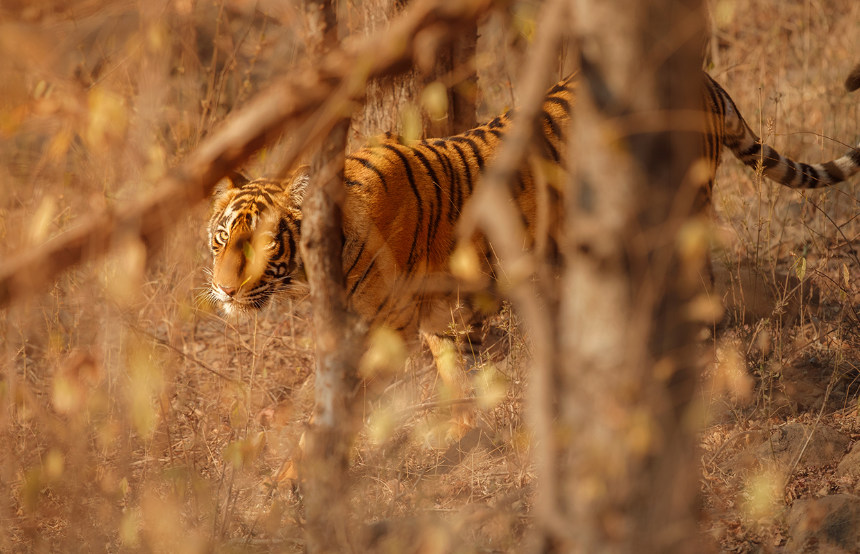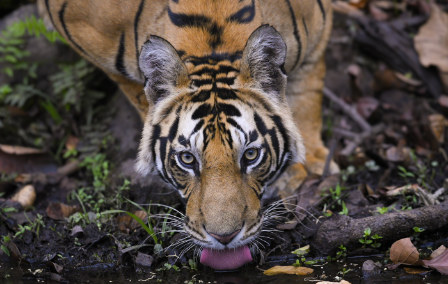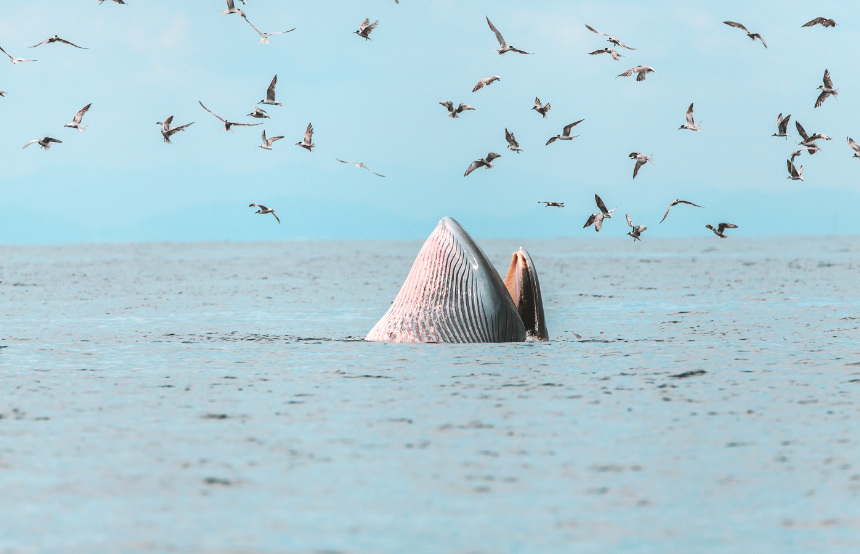Published 28th Jun. 2021
Reading time
There are lots of different names for these big cats, the most common being puma or cougar, but they're also known as mountain lions, panthers or catamounts. Pumas are recognisable by their slightly yellow coat, round face, pointed ears and long tail, which is nearly as long as their head and body combined. Unlike other big cats, pumas are mostly silent and cannot roar, instead they purr like a house cat and use whistles, screams and squeaks to communicate.
Pumas are usually very hard to see in the wild as they have huge ranges in unforgiving terrain: they live in a variety of habitats from desert scrubland to swamps and forests. They tend to avoid agricultural areas, flat lands and other areas that lack cover.
Pumas are mostly active at dusk, night and dawn, and can travel about six miles per night. Their primary prey is mostly hoofed mammals such as deer, but they're also partial to smaller animals like coyotes, porcupines and raccoons. They are generally slower than most of their prey but kill using the art of surprise, springing from cover at close range, usually from behind the unfortunate victim. They're also masters of disguise and prevent pesky scavengers from stealing their kills by dragging them to a secluded spot (the kill, not the pesky scavenger) and covering with leaves and debris to keep hidden.
Pumas can be found all over South and North America with their range stretching from south eastern Alaska all the way down to southern Chile and Argentina, however, hunting has unfortunately reduced their range to isolated areas. In Torres del Paine National Park in Chile, there is a good chance of seeing pumas on private jeep safaris, particularly from May to August.
Awasi Patagonia have set up a Puma Foundation, working to protect the puma and the unique ecosystem they live in here, while running sustainable excursions to observe the species in their natural habitat.
Practical advice and inspiration for your next trip

Searching for the best safaris in India? We’ve got you covered. Whether you’re keen to track tigers in Madhya Pradesh, admire Asiatic lions in Gujarat or photograph forest eagle owls in Kerala, your India holiday awaits. While Bengal tigers steal the limelight in Bandhavgarh National Park, don’t forget about the shaggy sloth bears (though they’re not as cuddly as they look). Feeling up for the adventure?
15th September 2025 - India Safari & Wildlife

With their sleek, tangerine-tinged coats, piercing eyes and commanding presence, nothing beats the thrill of seeing a tiger in the wild. And where better than in India, home to the largest population on Earth? But when it comes to the best time to see tigers in India, it all depends on what you want from your trip. Whether you’d rather vivid green landscapes or crowd-free safaris, we’ve got the insider intel on when to see India’s famous big cats.
23rd June 2025 - India Safari & Wildlife

Where are the best places for whale watching? We’re glad you asked. From the picturesque Icelandic town of Husavik to the coastal haven of Mirissa in Sri Lanka, there are plenty of destinations to marvel at these majestic creatures. Picture this: the air is still and all you can hear is the creaking of the catamaran and the odd, excited whisper. You scan the horizon, desperate to spot the tip of a fluke or a distant plume of whale breath.
16th June 2025 - Safari & Wildlife

Our team of destination experts will get to know you and your unique requirements for your holiday

We work with you to build an ultra-personalised holiday itinerary with your choice of accommodation, experiences and activities

All of our holidays include little extras designed to make a big difference to your trip, from fast-tracking you through airport check-in and security to our network of local Concierges